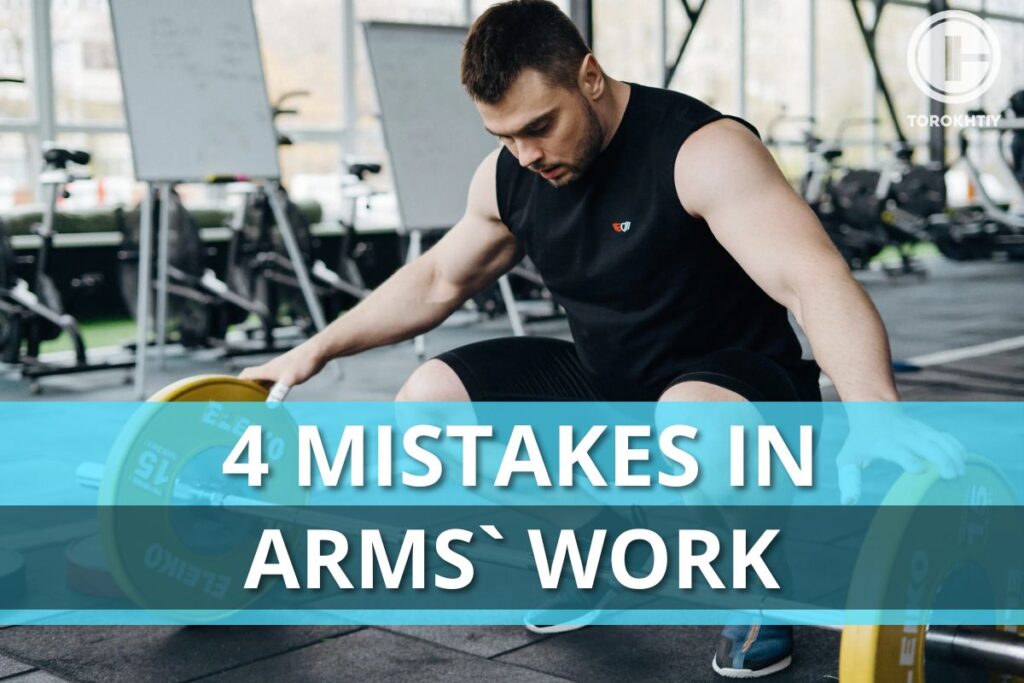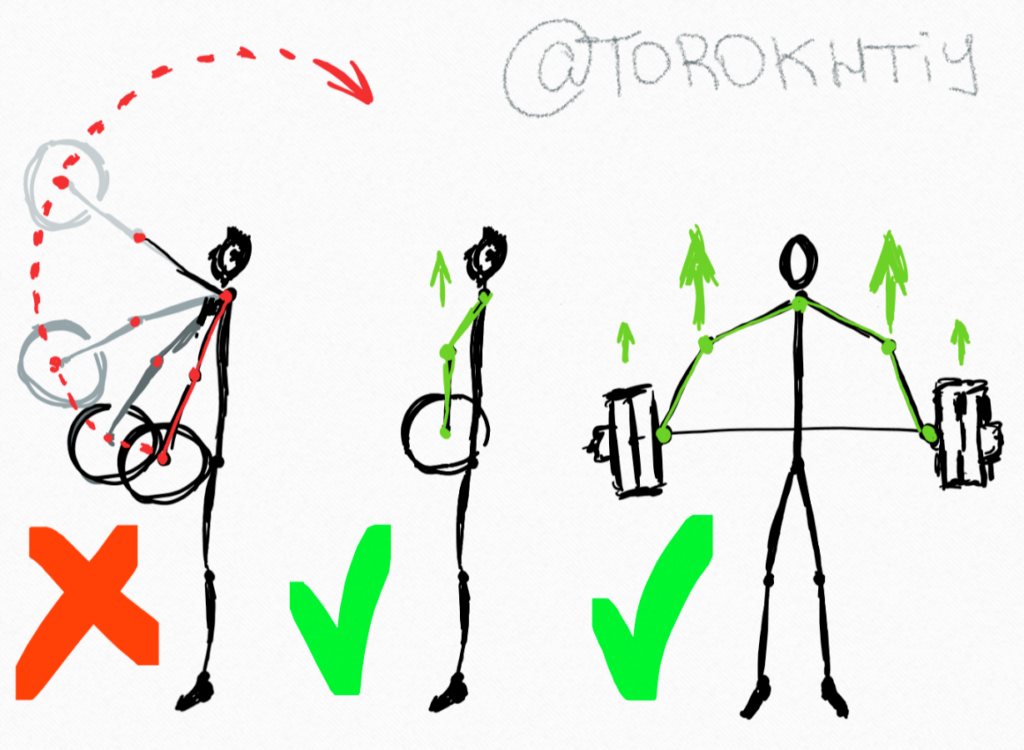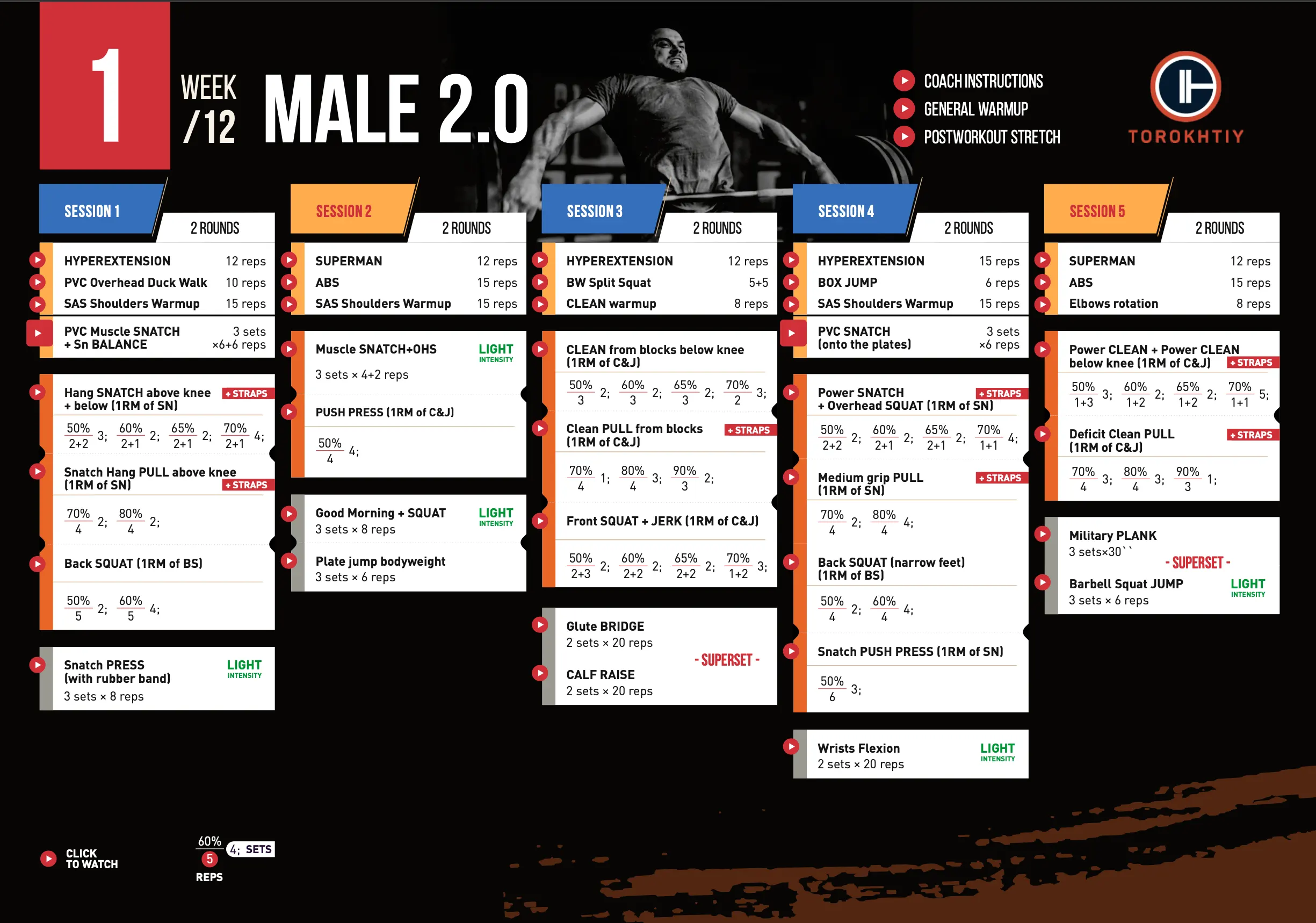4 Mistakes In Arms` Work
Author:
Unlock your full potential by engaging with our experts and community! Have questions about your fitness journey or looking for expert advice on weightlifting techniques? Don’t hesitate — leave a comment below and Sergii Putsov will provide a personalized answer and insights to help you reach your goals.
Torokhtiy is reader-supported. Some links are affiliate links, and we may earn a commission at no extra cost to you. See our disclosure page for details.

Everyone knows that after power position and full extension in snatch and clean, the next very important technical phase begins – arms’ work. But not everyone knows exactly how to do it and what to focus their attention on. Athletes make a large number of mistakes because of this and cannot realize their power potential and show the result on which they are ready.
Let’s deal with the 4 main mistakes during arms’ work:
Lack of control
Everyone knows that the shortest route from point A to point B is а straight line. That is the athlete has to make sure that the bar flies strictly up, as close to the body as possible. But quite often we see that after power position the bar moves away from the athlete or flies along an arc.
Follow us!

Free!
Get a 2-week Weightlifting Program as a bonus for the subscription to kickstart your training plan!

Free!
You may like it:
- Detailed Olympic Weightlifting Program For Beginners
- 12-Week Weightlifting Program For Women (Detailed Example)
- Create Your Olympic Weightlifting Program (Examples Included)
This happens mainly for three reasons:
- the first one is wrong mechanics of power position (hit with pelvis or backswing with shoulders);
- the second one is lack of bar control by arms after power positions;
- the third one is the first and the second together… it happens too.
Conclusion: after power position (correct power position it is necessary to direct elbows strictly upwards to ensure the vertical path of bar flight.
Wrong arms’ mechanics
After performing the power position, many athletes actively begin to direct the wrists up rather than the elbows. There are two issues with such movement mechanics: the bar flies not close enough to the athlete, the arms become fixed, the speed of bar movement decreases.
Conclusion: it is important to UNDERSTAND properly the mechanics of arms’ work and have the right skill to work in this phase. Working for a technique with light weight or even PVC will help you very much. Remember that even TOP athletes have “technical days” in their training programs which they devote to working out small details and elements of movement.

Arms are tight
Many athletes believe that in clean and snatch after power position it is necessary to apply a large muscle force with arms to the bar. I often notice in the gym as athletes lift crazy weights in muscle snatch exercise and believe that it will help in snatch. In fact, too strong arms can only ruin the result. In weightlifting, the arms should be high-speed and highly coordinated, but the arms’ strength is in third place.
Conclusion: one of the important points that the athlete has to control in the starting position, before he starts movement – tension and arms’ relaxation.
Work without hookgrip and straps
When I started running the seminars, that’s what impressed me the most. A lot of athletes from functional fitness lifted the bar without hookgrip, but with a simple grip. Many just didn’t know that in weightlifting it is necessary to lift a bar only with a hookgrip, because otherwise when after a large number of reps their forearms will become clogged and immobile by the end of the first minute of WOD, and then nothing will already help. It is also quite appropriate when performing pulls and snatch exercises to use straps, as it will help to save the skin on the palms and allow to relax the forearm muscles, which will make the arm more relaxed as a whole. Moreover, work with lifting straps increases efficiency of training in some sense, as the athlete does not need to focus on the grip itself, and he pays more attention to the main technical aspects of exercise. In my training programs I specifically advise in which exercises it is desirable to use straps.
Conclusion: snatch and clean are ALWAYS performed by hookgrip, and straps help you.
In conclusion, I will share a little observation: when at seminars I draw attention to the fact that strong and large arms for weightlifter are more a problem than an advantage, I always closely watch strong guys and in their eyes I notice sometimes a little disappointment and mistrust in my words. I think it’s okay to suspect and question any information. I share my experience, which I have also acquired by making mistakes. And I will be glad if this knowledge helps someone to make less mistakes and lift more.
TRAIN TOGETHER – TRAIN RIGHT
You might be interested in:
Why Trust Us?
With over 20 years in Olympic weightlifting, strength training, nutrition coaching, and general fitness our team does its best to provide the audience with ultimate support and meet the needs and requirements of advanced athletes and professional lifters, as well as people who strive to open new opportunities and develop their physical capabilities with us.
By trusting the recommendations of our certified experts in coaching, nutrition, and sports training programming, as well as scientific consultants, and physiotherapists, we provide you with thorough, well-considered, and scientifically proven content. All the information given in the articles concerning workout programming, separate exercises, and athletic performance, in general, is based on verified data.
The product testing process is described in more detail here.
Author: Sergii Putsov
Head of Sport Science, PhD
Best Results: Snatch – 165 kg,
C&J – 200 kg
Sergii Putsov, Ph.D., is a former professional weightlifter and National team member, achieving multiple medals in the 94 kg weight category at national competitions. With a Master’s degree in “Olympic & Professional Sport Training” and a Sport Science Ph.D. from the International Olympic Academy, Greece, Sergii now leads as the Head of Sport Science. He specializes in designing training programs, writing insightful blog articles, providing live commentary at international weightlifting events, and conducting educational seminars worldwide alongside Olympic weightlifting expert Oleksiy Torokhtiy.




Still have questions after reading our article? Unlock your full potential by engaging with our experts and community! Don’t hesitate — leave a comment below and Sergii Putsov will provide a personalized answer and insights to help you reach your goals.